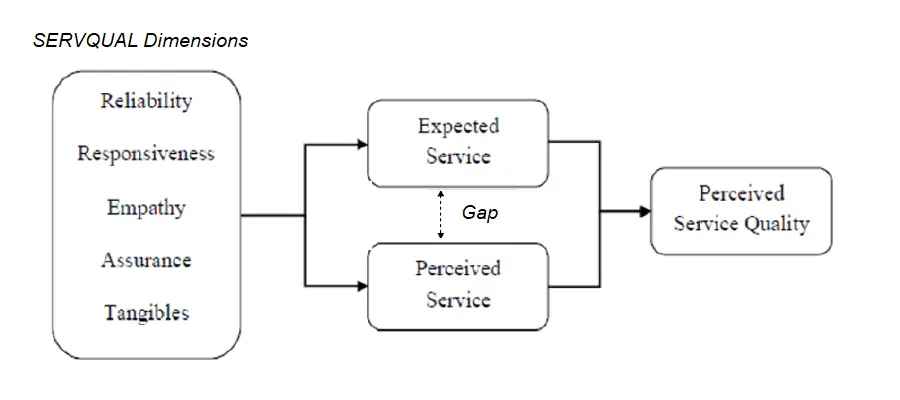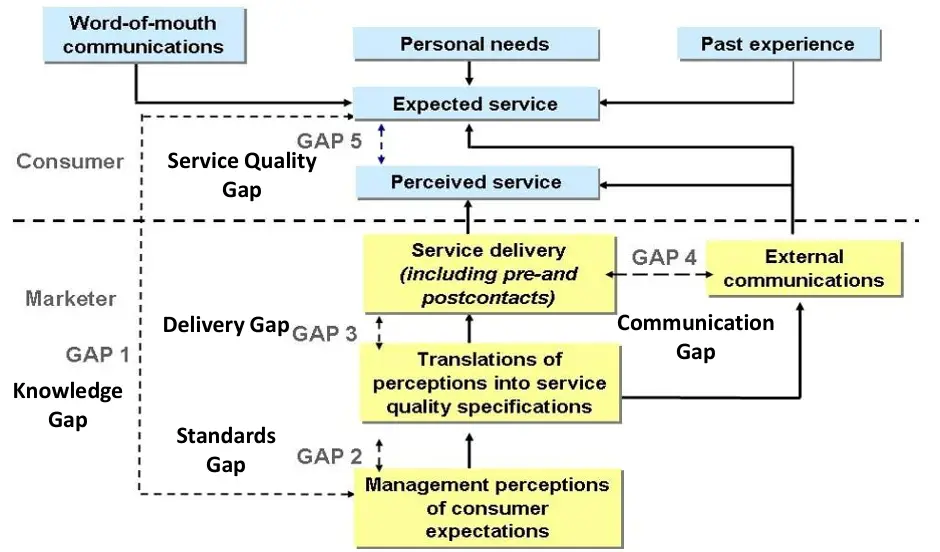
SERVQUAL is a widely used framework for assessing and measuring service quality in various industries and settings. SERVQUAL is based on the premise that customers’ perceptions of service quality are shaped by their expectations and the actual service they receive.
Companies measure customer satisfaction as an indicator of service quality. This enables them to improve the customer service experience when indicators of service quality go down.
Another reason that companies measure service quality through customer satisfaction surveys is to establish links among service quality, customer satisfaction, retention, defection, and share of wallet.
A well-known measure of consumer perception of service quality is SERVQUAL.
SERVQUAL is based on five factors that customers use in assessing service quality:
Tangibility: Physical facilities, equipment, and appearance of personnel. This dimension assesses the tangible aspects of the service environment that customers can see, touch, or experience.
Reliability: Ability to perform the promised service dependably and accurately. This dimension involves keeping promises, providing the service as agreed upon, and being reliable in terms of performance.
Responsiveness: Willingness to help customers and provide prompt service. It assesses how well a service provider reacts to customers’ needs and concerns.
Assurance: Knowledge and courtesy of employees and their ability to inspire trust and confidence. It involves the knowledge and courtesy of employees and their ability to convey trust and confidence.
Empathy: Caring, individualized attention the firm provides its customers. It reflects the consideration and individualized attention given to customers.
To measure service quality using SERVQUAL, customers are asked to rate their expectations and perceptions of service on each of these dimensions. The perceived service quality is then calculated by taking the difference between expectations and perceptions for each dimension.
Positive gaps indicate areas where the service provider exceeds customer expectations, while negative gaps highlight areas that may need improvement.

The SERVQUAL model has been widely adopted in various industries to identify strengths and weaknesses in service delivery, helping organizations to enhance customer satisfaction and loyalty.

References
A Conceptual Model of Service Quality and Its Implications for Future Research. A. Parasuraman, Valarie A. Zeithaml and Leonard L. Berry. Journal of Marketing, Vol. 49, No. 4 (Autumn, 1985), pp. 41-50
BATheories.com is managed by a group of educators from Mumbai. We also manage the website AcademicsHQ.com. Our panel includes experienced professionals and lecturers with a background in management. BATheories is where we talk about the various business theories and models for BA (Business Administration) students.